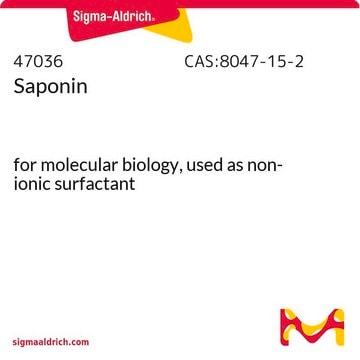SML1422
CCG-203971
≥98% (HPLC)
Synonym(s):
N-(4-Chlorophenyl)-1-[3-(2-furanyl)benzoyl]-3-piperidinecarboxamide
About This Item
Recommended Products
Quality Level
Assay
≥98% (HPLC)
form
powder
color
white to beige
storage temp.
2-8°C
SMILES string
ClC(C=C1)=CC=C1NC(C(C2)CCCN2C(C3=CC(C4=CC=CO4)=CC=C3)=O)=O
InChI
1S/C23H21ClN2O3/c24-19-8-10-20(11-9-19)25-22(27)18-6-2-12-26(15-18)23(28)17-5-1-4-16(14-17)21-7-3-13-29-21/h1,3-5,7-11,13-14,18H,2,6,12,15H2,(H,25,27)
InChI key
HERLZBNILRVHQN-UHFFFAOYSA-N
Biochem/physiol Actions
The Rho/MRTF/SRF pathway has also been shown to be involved in multiple types of solid organ fibrosis. CCG-203971 repressed both matrix-stiffness and TGF-β-mediated fibrogenesis in human colonic myofibroblasts and showed antifibrotic activity in a murine model of skin injury and in pulmonary fibrosis lung fibroblasts.
Signal Word
Warning
Hazard Statements
Precautionary Statements
Hazard Classifications
Acute Tox. 4 Oral
Storage Class Code
11 - Combustible Solids
WGK
WGK 3
Flash Point(F)
Not applicable
Flash Point(C)
Not applicable
Certificates of Analysis (COA)
Search for Certificates of Analysis (COA) by entering the products Lot/Batch Number. Lot and Batch Numbers can be found on a product’s label following the words ‘Lot’ or ‘Batch’.
Already Own This Product?
Find documentation for the products that you have recently purchased in the Document Library.
Our team of scientists has experience in all areas of research including Life Science, Material Science, Chemical Synthesis, Chromatography, Analytical and many others.
Contact Technical Service









